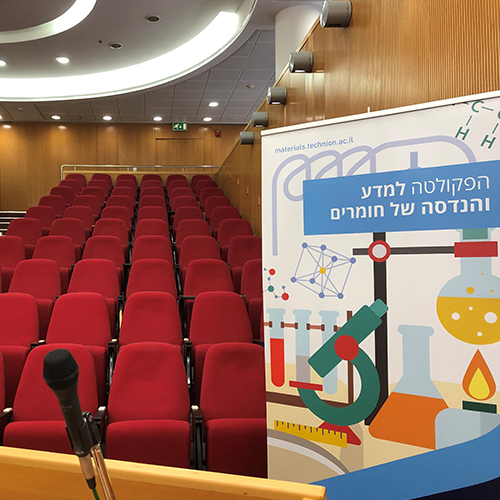
Mr. Avihay Ben Shitrit - M.Sc. candidate
18.02.2024
אודיטוריום ע"ש דויד וואנג, בניין מידן, קומה 3
14:30
One of the technologies that can help bridge the intermittency gap of renewables is aqueous electrolyte batteries, which unlike lithium-ion batteries do not rely on organic solvents, and unlike solid state batteries do not require operation at elevated temperatures, and therefore do not face the same safety and operational challenges. Due to the ubiquity of nickel (oxy)hydroxide in alkaline batteries, and due to its high-cost relative to the materials that compose the anode, a great deal of importance has been placed on better understanding its behavior in order to improve battery performance. The currently used homogeneous solid-solution models fail to explain phenomena observed in nickel (oxy)hydroxide such as hysteresis and negative differential resistance upon charge/discharge cycling.
In this work, the β-Ni(OH)2 β-NiOOH transition which dominates the charge/discharge dynamics was optically monitored during charge/discharge cycles. For this purpose, thin films of nickel hydroxide were deposited in a variety of methods on a transparent and conducive substrate. Successive ionic layer adsorption and reaction (SILAR) process allowed for the deposition of a layer with appropriate uniformity and thickness, as confirmed via Atomic Force Microscopy (AFM) and Rutherford Backscattering Spectrometry (RBS). Operando optical microscopy observations show that the nickel (oxy)hydroxide layer charges heterogeneously but discharges homogenously at the macroscopic scale. The potential causes of this behavior and the key takeaways from it, are discussed.


